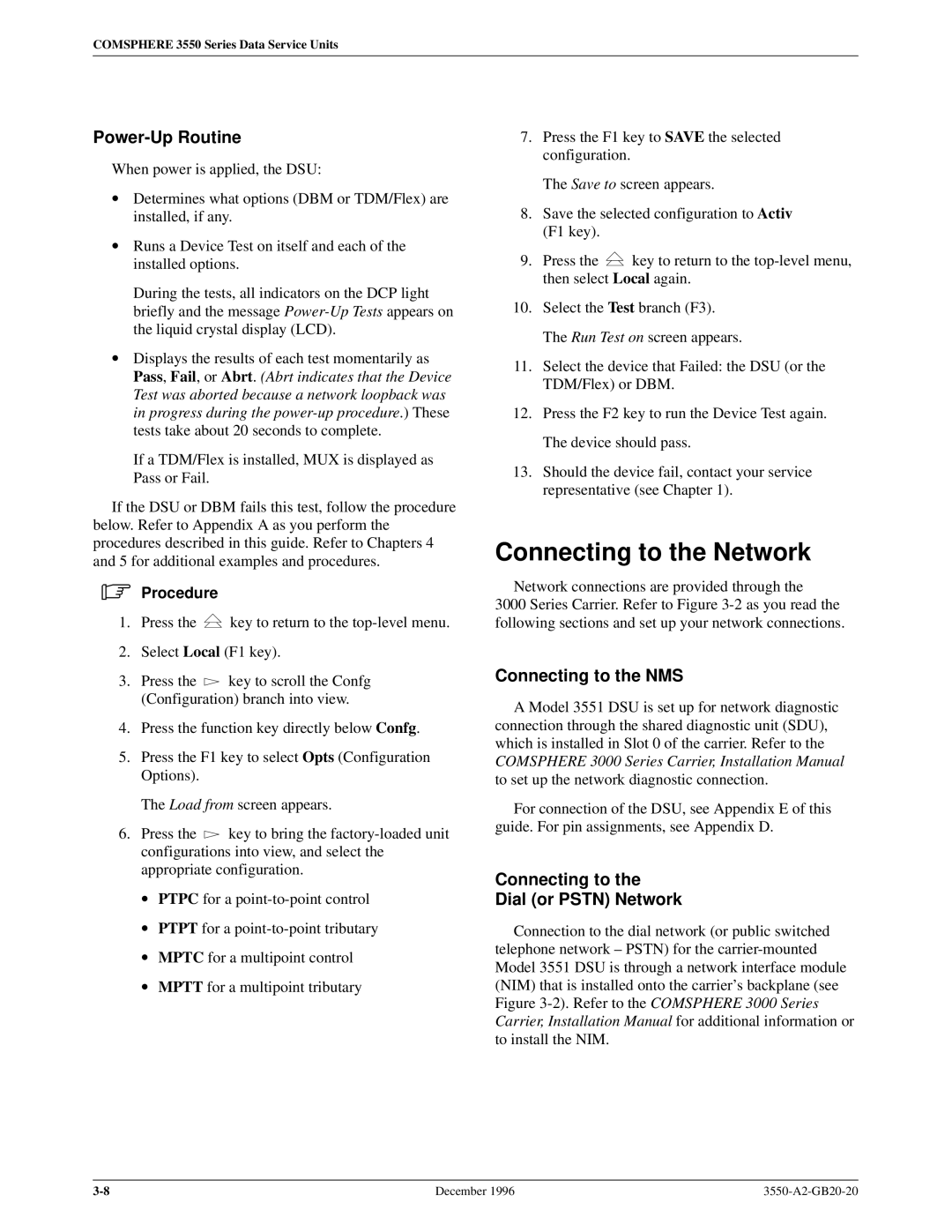
COMSPHERE 3550 Series Data Service Units
Power-Up Routine
When power is applied, the DSU:
•Determines what options (DBM or TDM/Flex) are installed, if any.
•Runs a Device Test on itself and each of the installed options.
During the tests, all indicators on the DCP light briefly and the message
•Displays the results of each test momentarily as Pass, Fail, or Abrt. (Abrt indicates that the Device Test was aborted because a network loopback was in progress during the
If a TDM/Flex is installed, MUX is displayed as Pass or Fail.
If the DSU or DBM fails this test, follow the procedure below. Refer to Appendix A as you perform the procedures described in this guide. Refer to Chapters 4 and 5 for additional examples and procedures.
.Procedure
1.Press the ![]() key to return to the
key to return to the
2.Select Local (F1 key).
3.Press the ![]() key to scroll the Confg (Configuration) branch into view.
key to scroll the Confg (Configuration) branch into view.
4.Press the function key directly below Confg.
5.Press the F1 key to select Opts (Configuration Options).
The Load from screen appears.
6.Press the ![]() key to bring the
key to bring the
•PTPC for a
•PTPT for a
•MPTC for a multipoint control
•MPTT for a multipoint tributary
7.Press the F1 key to SAVE the selected configuration.
The Save to screen appears.
8.Save the selected configuration to Activ (F1 key).
9.Press the ![]() key to return to the
key to return to the
10.Select the Test branch (F3). The Run Test on screen appears.
11.Select the device that Failed: the DSU (or the TDM/Flex) or DBM.
12.Press the F2 key to run the Device Test again. The device should pass.
13.Should the device fail, contact your service representative (see Chapter 1).
Connecting to the Network
Network connections are provided through the 3000 Series Carrier. Refer to Figure
Connecting to the NMS
A Model 3551 DSU is set up for network diagnostic connection through the shared diagnostic unit (SDU), which is installed in Slot 0 of the carrier. Refer to the COMSPHERE 3000 Series Carrier, Installation Manual to set up the network diagnostic connection.
For connection of the DSU, see Appendix E of this guide. For pin assignments, see Appendix D.
Connecting to the
Dial (or PSTN) Network
Connection to the dial network (or public switched telephone network ± PSTN) for the
December 1996 |
